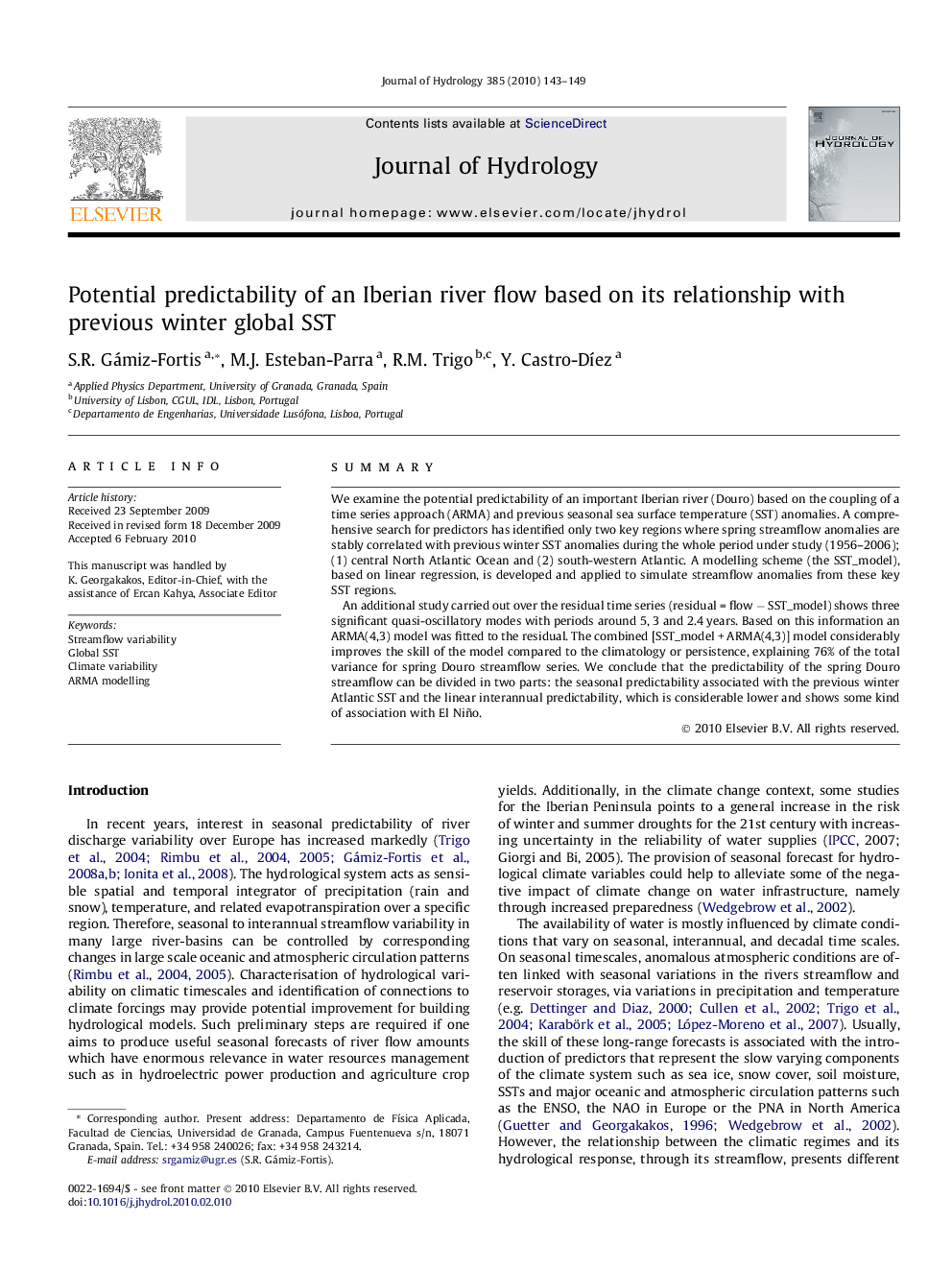| Article ID | Journal | Published Year | Pages | File Type |
|---|---|---|---|---|
| 4578421 | Journal of Hydrology | 2010 | 7 Pages |
SummaryWe examine the potential predictability of an important Iberian river (Douro) based on the coupling of a time series approach (ARMA) and previous seasonal sea surface temperature (SST) anomalies. A comprehensive search for predictors has identified only two key regions where spring streamflow anomalies are stably correlated with previous winter SST anomalies during the whole period under study (1956–2006); (1) central North Atlantic Ocean and (2) south-western Atlantic. A modelling scheme (the SST_model), based on linear regression, is developed and applied to simulate streamflow anomalies from these key SST regions.An additional study carried out over the residual time series (residual = flow − SST_model) shows three significant quasi-oscillatory modes with periods around 5, 3 and 2.4 years. Based on this information an ARMA(4,3) model was fitted to the residual. The combined [SST_model + ARMA(4,3)] model considerably improves the skill of the model compared to the climatology or persistence, explaining 76% of the total variance for spring Douro streamflow series. We conclude that the predictability of the spring Douro streamflow can be divided in two parts: the seasonal predictability associated with the previous winter Atlantic SST and the linear interannual predictability, which is considerable lower and shows some kind of association with El Niño.
